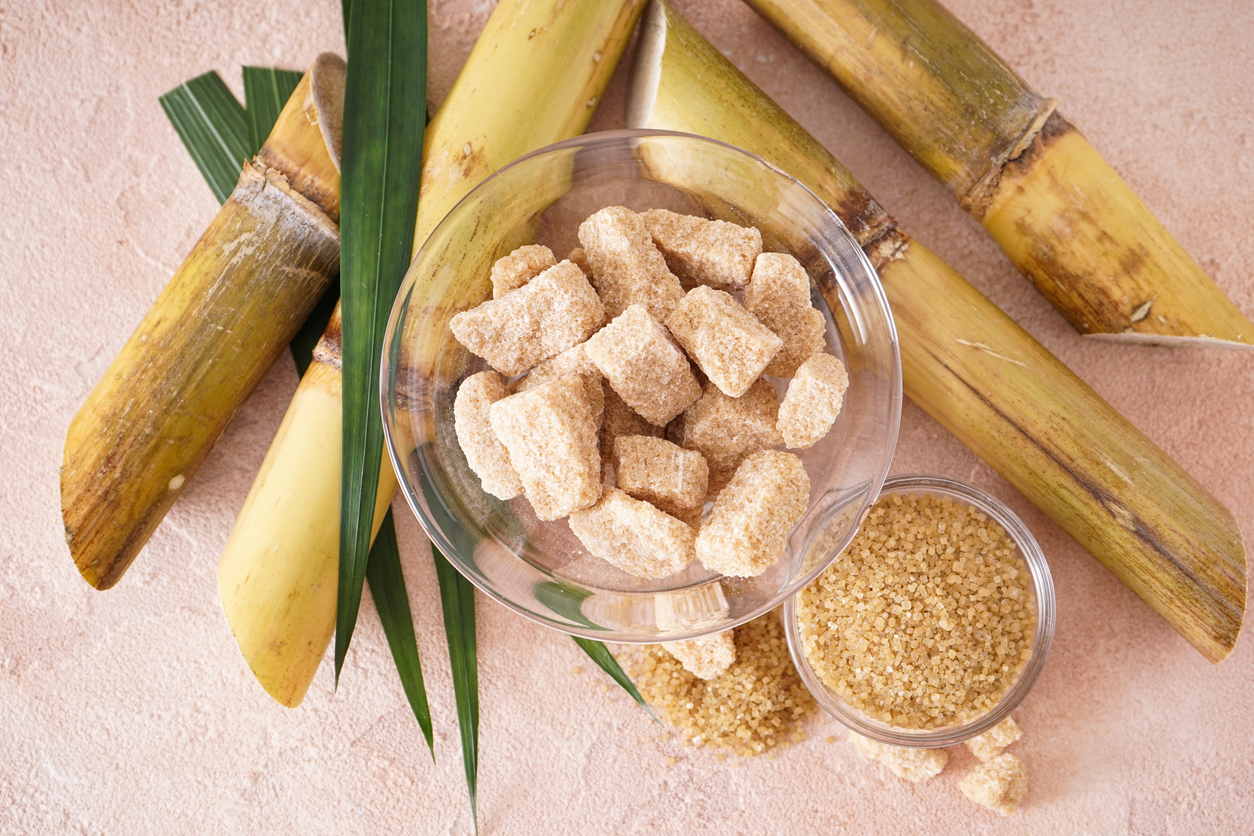The Economics Behind Sugarcane Price Volatility: A Closer Look
The Economics Behind Sugarcane Price Volatility: A Closer Look
If you’ve ever wondered why the price of sugarcane seems to swing like a pendulum, leaving farmers and consumers alike scratching their heads, then this blog post is for you. Join us as we delve into the fascinating world of sugar economics and uncover the factors that contribute to the rollercoaster ride of sugarcane prices. From global supply and demand dynamics to weather patterns and government policies, we’ll take a closer look at how these elements intertwine to create an intricate web behind sugarcane price volatility. So fasten your seatbelts, because we’re about to embark on a thrilling journey through the economic forces shaping one of our favorite sweet commodities!
Introduction to Sugarcane and its Importance in the Global Market
Introduction to Sugarcane and its Importance in the Global Market
Sugarcane is a tall, perennial grass that is widely cultivated for its sweet juice. The plant is native to tropical regions and has been used for thousands of years as a source of sugar, ethanol, and other products. Today, sugarcane is one of the most important crops in the world, with an estimated global production of over 1.9 billion tons in 2020.
The significance of sugarcane in the global market cannot be overstated. It is not only a major source of income for millions of farmers but also plays a crucial role in food security, energy production, and international trade. In this section, we will delve deeper into the economics behind sugarcane price volatility by exploring its importance in the global market.
Importance in Food Production
One of the primary uses of sugarcane is as a source of sugar – both table sugar and high-fructose corn syrup (HFCS). Sugar from sugarcane accounts for approximately 80% of total sugar production worldwide. This makes it an essential ingredient in many food and beverage products such as soft drinks, baked goods, confectionery items, and more.
Moreover, sugarcane also serves as animal feed when processed into molasses or bagasse – the fibrous residue left after juice extraction. This helps support livestock production which ultimately contributes to food security.
Factors Affecting Sugarcane Price Volatility
Factors Affecting Sugarcane Price Volatility:
Sugarcane is a vital commodity in the global market, with its production and trade contributing significantly to the economies of many countries. However, like any other agricultural commodity, sugarcane prices are subject to volatility. This means that they can fluctuate significantly over time, often affecting both producers and consumers.
There are various factors that contribute to this volatility in sugarcane prices. These include:
1. Supply and Demand: One of the primary drivers of price volatility is the balance between supply and demand for sugarcane in the market. When there is an oversupply of sugarcane, prices tend to decrease as producers compete for buyers. On the other hand, when there is a shortage of supply, prices increase due to high demand for limited quantities of sugarcane.
2. Weather Conditions: As a crop that heavily relies on favorable weather conditions for growth and production, any changes in weather patterns can have a significant impact on sugarcane prices. Adverse weather conditions such as droughts or floods can lead to reduced yields and ultimately result in higher prices due to limited supply.
3. Government Policies: Governments play a crucial role in regulating the production and trade of sugarcane through policies such as import/export tariffs, subsidies, and quotas. Changes in these policies can affect the supply chain and result in price fluctuations.
– Demand and Supply Dynamics
Demand and supply dynamics play a crucial role in the volatility of sugarcane prices. In this section, we will delve deeper into these two fundamental economic forces and how they interact to impact the price of sugarcane.
Demand for Sugarcane
The demand for sugarcane is primarily driven by its use in the production of sugar, ethanol, and other by-products such as molasses. The global demand for sugar has been steadily increasing over the years due to population growth, urbanization, and changing dietary patterns. According to the Food and Agriculture Organization (FAO), over 174 million tonnes of sugar were consumed worldwide in 2019.
One of the main factors that influence the demand for sugar is its price. When sugar prices are low, consumers tend to increase their consumption as it becomes more affordable. On the other hand, high prices may lead to a decrease in demand as consumers look for cheaper alternatives or reduce their overall consumption.
Another significant factor affecting sugarcane demand is government policies and regulations. For instance, many countries have implemented mandates requiring a certain percentage of ethanol to be blended with gasoline, which creates an additional source of demand for sugarcane.
Supply of Sugarcane
The supply side of sugarcane is equally important in understanding its price volatility. As with most agricultural commodities, weather conditions heavily impact sugarcane production. Droughts or floods can significantly reduce yields and cause shortages in supply, thereby driving up prices.
– Climate Change and Natural Disasters
Climate change and natural disasters play a significant role in the volatility of sugarcane prices. Climate change has led to unpredictable weather patterns, which directly affect the growth and production of sugarcane. Natural disasters such as hurricanes, floods, and droughts further exacerbate the already volatile market for sugarcane.
One of the main impacts of climate change on sugarcane is through extreme weather events. The increasing frequency and intensity of these events have resulted in crop damage, loss of yield, and increased production costs for farmers. For example, heavy rains can delay harvesting, leading to lower quality sugarcane and lower profits for farmers. On the other hand, droughts can result in stunted growth and reduced sugar content in the cane, leading to lower yields.
In addition to extreme weather events, climate change also affects the overall growing conditions for sugarcane. Rising temperatures and changes in rainfall patterns can lead to less suitable environments for growing sugarcane. This results in decreased productivity and higher costs for farmers who may need to invest in irrigation systems or adapt their farming practices.
Natural disasters also have a significant impact on sugarcane prices. These events can cause extensive damage to crops, infrastructure, and transportation systems that are crucial for moving sugar from farms to markets. In 2017 alone, Hurricane Irma caused an estimated $761 million worth of damages to Florida’s agriculture industry (which includes sugarcane). This disruption in supply leads to shortages in the market, causing prices to spike.
– Government Policies and Subsidies
Government policies and subsidies play a crucial role in shaping the economics of sugarcane production and price volatility. In this section, we will delve into the various policies and subsidies that impact the sugarcane market.
1. Minimum Support Price (MSP):
The MSP is the minimum price at which the government guarantees to purchase a commodity from farmers. In India, sugarcane has a statutory MSP set by the government, which acts as a floor price for sugarcane. This ensures that farmers receive a fair price for their produce and are protected from market fluctuations.
However, the implementation of MSP has its drawbacks. The actual price paid to farmers often falls below the MSP due to delays in procurement or unwillingness of sugar mills to pay higher prices. This leads to discontent among farmers and can also result in overproduction, further exacerbating price volatility.
2. Subsidies on Inputs:
Sugarcane production requires significant amounts of water, fertilizers, and electricity. To reduce production costs and encourage more cultivation, governments provide subsidies on these inputs. Subsidized electricity rates for irrigation pumps have been a key incentive for farmers in many countries like India and Thailand.
While these subsidies aim to support small-scale farmers who lack resources, they can also lead to inefficiencies in resource usage and overuse of inputs, causing environmental concerns.
– International Trade Agreements
International trade agreements play a significant role in the economics of sugarcane price volatility. These agreements, also known as free trade agreements or FTAs, are legally binding contracts between countries that aim to promote international trade by reducing barriers such as tariffs and quotas.
One of the main ways in which FTAs affect sugarcane prices is through their impact on imports and exports. Many countries that produce sugarcane have entered into FTAs with other countries, allowing for easier access to foreign markets. This has led to an increase in competition and a larger global supply of sugarcane.
On one hand, this increased competition can lead to lower prices for consumers as producers are forced to lower their prices in order to remain competitive. However, it can also result in decreased profits for domestic producers who may struggle to compete with cheaper imported sugarcane.
Additionally, some FTAs include clauses that limit the amount of sugar that can be imported into a country. Known as quota systems, these limitations can create artificial scarcity and drive up domestic sugar prices. This was seen in the United States after the implementation of the North American Free Trade Agreement (NAFTA) in 1994 when Mexican sugar exports were limited by quotas.
Apart from imports and exports, another important aspect of FTAs is their impact on government subsidies for sugarcane production. Many developing countries heavily subsidize their sugarcane industries, giving them a competitive advantage over producers in other countries.
Case Studies on Major Sugarcane Producing Countries
Introduction:
Sugarcane is a widely cultivated crop, with its production contributing significantly to the global economy. However, like any other agricultural commodity, sugarcane is also subject to price volatility due to various factors such as weather conditions, demand-supply dynamics, and government policies. In this section, we will examine case studies of major sugarcane producing countries to gain a better understanding of the economics behind sugarcane price volatility.
1. Brazil:
Brazil is the world’s largest producer of sugarcane, accounting for around 25% of the global production. The country has a well-developed sugarcane industry, driven by its favorable climate and technological advancements in cultivation and processing methods. The majority of Brazil’s sugarcane production is used for ethanol production, making it a significant player in the biofuels market.
Despite being a major exporter of sugar and ethanol, Brazil’s domestic prices are heavily influenced by international market trends. For instance, in 2020 when there was an oversupply of sugar globally due to high production in India and Thailand, Brazil’s domestic prices were impacted negatively. Additionally, fluctuations in currency exchange rates also affect Brazil’s sugarcane prices as most transactions are done in U.S dollars.
– Brazil
Brazil is the world’s largest producer and exporter of sugarcane, accounting for over 40% of the global production. The country has a long history with sugarcane cultivation, dating back to the colonial era when it was first introduced by Portuguese settlers. Today, Brazil’s sugarcane industry plays a vital role in its economy, contributing significantly to its GDP and providing employment for millions of people.
The economics behind Brazil’s sugarcane industry is complex and multifaceted, influenced by various factors such as government policies, weather conditions, and global market demand. In this section, we will take a closer look at how these factors contribute to the price volatility of sugarcane in Brazil.
Government Policies:
One of the main drivers of sugarcane price volatility in Brazil is government policies. The Brazilian government heavily subsidizes the production of ethanol from sugarcane through tax incentives and subsidies. This support has led to an increase in ethanol production, which now accounts for almost two-thirds of Brazil’s total sugarcane output.
However, these policies have also resulted in oversupply and artificially low prices for sugar cane producers. When there is excess supply in the market due to increased ethanol production, sugar prices tend to drop as well. On the other hand, during times of low ethanol demand or unfavorable weather conditions that affect crop yields, the government may impose import tariffs on foreign sugar to protect domestic producers. This can lead to higher prices for both ethanol and sugar domestically.
– Historical Trends in Sugarcane Price Fluctuations
Sugarcane has been an important crop for centuries, and its price fluctuations have a long and complex history. In this section, we will delve into the historical trends of sugarcane prices and explore the various factors that have contributed to its volatility.
The Origins of Sugarcane Price Fluctuations:
The origins of sugarcane can be traced back to ancient times, with evidence dating back to 8,000 BC in New Guinea. The cultivation and trade of sugarcane spread throughout Asia and eventually made its way to Europe through Arab traders in the Middle Ages. As demand for sugar grew, so did the price of sugarcane.
During the 17th and 18th centuries, European colonization played a significant role in shaping the global sugarcane market. Countries like Portugal, Spain, France, and England established colonies in tropical regions where sugarcane could be grown on large plantations using slave labor. This led to a massive increase in production and a decrease in prices due to economies of scale.
The introduction of slavery also had a significant impact on pricing as it lowered production costs significantly. However, with growing concerns about human rights violations and political pressure against slavery during the 19th century, many countries abolished or limited it. This caused a shift towards wage labor systems which increased production costs leading to higher prices.
– Impact of Ethanol Production on Sugarcane Prices
The production of ethanol, a biofuel made from sugarcane, has had a significant impact on the prices of sugarcane. In recent years, there has been an increase in demand for ethanol due to its use as a renewable energy source. This rise in demand has led to an increase in sugarcane prices and has also caused volatility in the market.
One of the main reasons for the impact of ethanol production on sugarcane prices is government policies. Many countries have implemented policies that mandate the blending of ethanol with gasoline, thus increasing its demand. For example, Brazil – one of the largest producers and exporters of sugarcane – has a long-standing policy requiring 27% blending of ethanol with gasoline. This creates a steady demand for sugarcane and results in higher prices.
Moreover, fluctuations in oil prices also play a crucial role in determining the price of sugarcane. As oil prices rise, so does the cost of gasoline, making it more expensive for consumers. This leads to an increased demand for alternative fuel sources such as ethanol, driving up the demand for sugarcane and subsequently increasing its price.
In addition to government policies and oil prices, weather conditions can also affect the cost of producing ethanol from sugarcane. Droughts or floods can damage crops and reduce their yield, which leads to lower supply and higher prices.








Comments are closed.